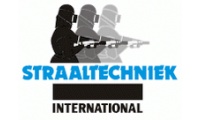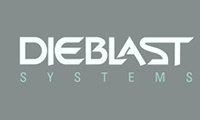Applications
Shot peening is used on gear parts, cams and camshafts, clutch springs, coil springs, connecting rods, crankshafts, gearwheels, leaf and suspension springs, rock drills, and turbine blades. It is also used in foundries for sand removal, decoring, descaling, and surface finishing of castings such as engine blocks and cylinder heads. Its descaling action can be used in the manufacturing of steel products such as strip, plates, sheets, wire, and bar stock.
Shot peening is a crucial process in spring making. Types of springs include leaf springs, extension springs, and compression springs. The most widely used application are for engine valve springs (compression springs) due to high cyclic fatigue. In an OEM valve spring application, the mechanical design combined with some shot peening ensures longevity; however, automotive makers are shifting to more high performance higher stressed valve spring designs as modern engines evolve. In aftermarket high performance valve spring applications, the need for controlled and multi-step shot peening is a requirement to withstand extreme surface stresses that sometimes exceeds material specifications. The fatigue life of an extreme performance spring (NHRA, IHRA) can be as short as two passes down a 1/4 mile drag racing track before relaxation or failure occurs.
Shot peening may be used for cosmetic effect. The surface roughness resulting from the overlapping dimples causes light to scatter upon reflection. Because peening typically produces larger surface features than sand-blasting, the resulting effect is more pronounced.
Shot peening and abrasive blasting can apply materials on metal surfaces. When the shot or grit particles are blasted through a powder or liquid containing the desired surface coating, the impact plates or coats the workpiece surface. The process has been used to embed ceramic coatings, though the coverage is random rather than coherent. 3M developed a process where a metal surface was blasted with particles with a core of alumina and an outer layer of silica. The result was fusion of the silica to the surface. The process known as peen plating was developed by NASA. Fine powders of metals or non-metals are plated onto metal surfaces using glass bead shot as the blast medium. The process has evolved to applying solid lubricants such as molybdenum disulphide to surfaces. Biocompatible ceramics have been applied this way to biomedical implants. Peen plating subjects the coating material to high heat in the collisions with the shot and also must be available in powder form, limiting the range of materials that can be used. To overcome the problem of heat, a process called temperature moderated-collision mediated coating (TM-CMC) has allowed the use of polymers and antibiotic materials as peened coatings. The coating is presented as an aerosol directed to the surface at the same time as a stream of shot particles. The TM-CMC process is still in the R&D phase of development.





